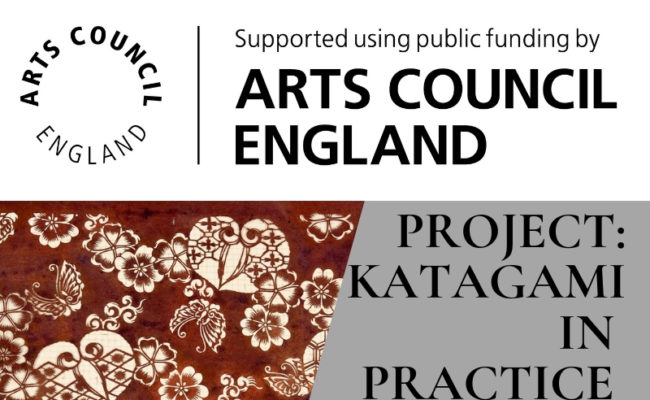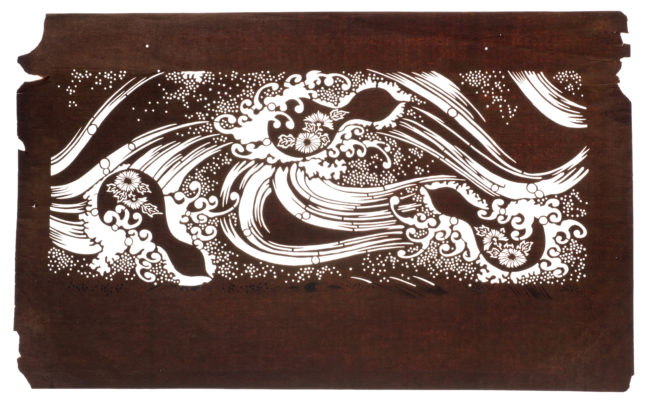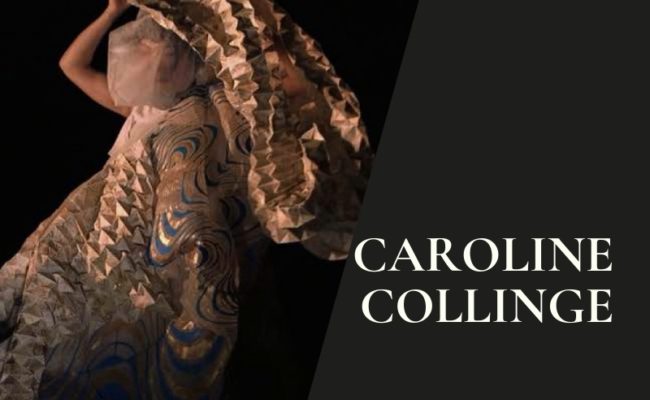‘Oho Nami’ (Great Wave) katagami stencil
Brief description
'Oho Nami' (Great Wave) katagami stencil, 1850 - 1880.
Date
1850 - 1880
Dimensions
height: 256mm
width: 411mm
stencil height: 128mm
stencil width: 343mm
More details
The pattern of this Katagami relates to 'Oho Nami' (Great Wave) in the late Edo period (1780-1867). Each element depicts waves spreading widely, meaning 'getting a better situation from now to the future', signifying good luck to come. Sea wave patterns in the late Edo period frequently use 'Seigaiha' (geometrically repeating waves of the sea). However, this wave pattern is not geometric 'Seigaiha', but the sea waves themselves. Great wave patterns on Katagami were used for Oiran geisha and Kabuki actor costumes. This Katagami pattern in the fashion of the Great Wave is shown in Ukiyo-e Kimonos gaining popularity around late Edo period (1780-1867). Shimamura is believed to have produced many wave pattern Katagami most certainly influenced from the mania of great wave art. The carp pattern combined with waves was also related to this mania. In the SS collection k1-12 and k2-22 carp and wave, k2-33 and k2-85 are also patterns related to the waves. Many great wave patterns are seen in the Japanese Shimamura collection and is a good indicator that this Katagami was created after 1830. This overlaps in time when Ukiyo-e artists created great wave woodcut print work and is indicative that Shimamura was involving in the great wave art movement. This is one of around 400 Japanese katagami stencils which are part of the Silver Studio Collection. The stencils were produced in Japan as a way of applying patterns to fabric, mainly kimonos. The katagami collected by the Silver Studio were used by their designers as reference material to produce their own Japanese-inspired patterns. This Katagami employed the Itoire technique. This is one method of silk thread reinforcement in Katagami. Itoire was a detailed technique which was applied to Katagami by veteran female artisans at Shiroko, Ise, from about 1750. Itoire was used until 1920. See Markham, Mamiko (2018): Katagami technique Itoire. Middlesex University. Journal contribution. https://doi.org/10.22023/mdx.6477776.v1






Comments